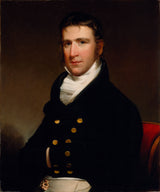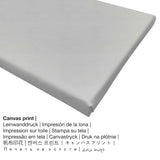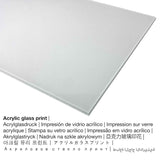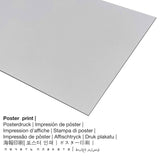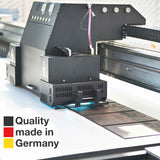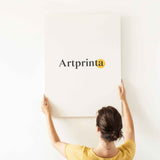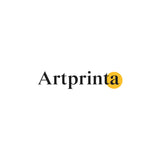Jacob Eichholtz, 1821 - Elliott Tole Lane - mbipụta nka mara mma
Ụtụ gụnyere. Mbupu gbakọrọ na ndenye ọpụpụ.
"Elliott Tole Lane" by Jacob Eichholtz as your personal art copy
The 19th narị afọ onye na-ese ihe mere nka Jacob Eichholtz. Enwere ike ilele ihe osise na mkpokọta Ebe ngosi nka nke Los Angeles County in Los Angeles, California, Njikota Obodo Amerika. The public domain work of art is being included with courtesy of Los Angeles County Museum of Art (www.lacma.org).In addition, the artpiece has the following creditline: . In addition to that, the alignment of the digital reproduction is portrait and has a ratio of 1 : 1.2, which means that ogologo bụ 20% mkpụmkpụ karịa obosara.
What does the website of the Los Angeles County Museum of Art write about this work of art made by Jacob Eichholtz? (© - site na Los Angeles County Museum of Art - Ebe ngosi nka nke Los Angeles County)
Banyere oge
The art of the early Federal period did not greatly differ from that of the late colonial era. Portraits dominated the small field of painting. Victories on land and at sea in the War of 1812 brought the fledgling democracy greater confidence and new national pride. By 1829, when Andrew Jackson assumed the presidency, the foundations for an independent culture were securely laid. The philosopher-poet Ralph Waldo Emerson expressed the mood of the country in 1837: “our day of dependence, our long apprenticeship to the learning of other lands, draws to a close.” The following decades would bring a swell of artistic creativity, focused on native themes that extolled the seemingly limitless bounty of the New World. Portraiture, and to a lesser extent history painting, continued to occupy American artists, but increasing numbers turned to views of the local countryside and its inhabitants. Although the industrial revolution only began in the United States after the War of 1812, the following three decades witnessed economic changes, especially in the north, that significantly affected working conditions, family structure, and even religion. Paintings illustrated American virtues like ingenuity and industry as well as the pleasures of country life. The new taste for genre pictures—scenes of ordinary people involved in everyday activities—seemed ideally suited to the egalitarian attitude of the Jacksonian era.
This period also saw the rise of the country’s first truly national school of landscape painting, ultimately known as the Hudson River school. Its earliest, best-known exponent, Thomas Cole, sometimes painted romantic literary subjects in European settings, but his dramatic depictions of the American wilderness helped spur the popularity of American views. As the country developed, paintings of uninhabited wilderness were replaced by views of farms, towns, and factories, but American artists retained their sense of awe about the land.
Nkọwa ọrụ nka
| Aha nka: | "Elliott Tole Lane" |
| Nhazi: | sere |
| Category: | nkà nke oge a |
| Century: | 19th narị afọ |
| Afọ nka: | 1821 |
| Ogologo afọ nka nka: | ihe dị ka afọ 190 |
| Ụlọ ihe ngosi nka / mkpokọta: | Ebe ngosi nka nke Los Angeles County |
| Ebe ebe ngosi nka: | Los Angeles, California, Njikota Obodo Amerika |
| URL webụ: | www.lacma.org |
| Akwụkwọ ikike nka: | ngalaba ọha |
| Site n'aka: | Ụlọ ihe ngosi nka nke Los Angeles County (www.lacma.org) |
Banyere onye na-ese ihe
| Aha onye nka: | Jacob Eichholtz |
| A makwaara dịka: | Eichholtz Jacob, Jacob Eicholtz, eichholtz jacob, Jacob Eichholtz, eichholtz j., eichholt jacob, Eicholtz Jacob |
| Gender: | nwoke |
| Obodo onye nka: | American |
| Ọrụ nke onye na-ese ihe: | painter, coppersmith |
| Obodo onye nka: | United States |
| nhazi ọkwa: | omenkà nke oge a |
| Nwụrụ na afọ nke: | 66 afọ |
| A mụrụ: | 1776 |
| Afọ ọnwụ: | 1842 |
Kedu ihe ngwaahịa kacha amasị gị?
Ngwa ndetu ngwaahịa na-enye gị ohere ịhọrọ nha na akụrụngwa masịrị gị. Anyị na-ahapụ gị ka ịhọrọ n'ime ụdị ndị a:
- Mbipụta akwụkwọ mmado (akwa akwa akwa): The poster is a printed sheet of canvas paper with a granular texture on the surface. It is suited for putting your art copy using a personal frame. Please keep in mind, that depending on the size of the poster print we add a white margin of around 2-6cm round about the painting in order to facilitate the framing.
- Mbipụta enyo acrylic: An print on acrylic glass, often named a UV print on plexiglass, changes the artwork into wall decoration and offers a good alternative to dibond or canvas fine art prints. Your own copy of the work of art is printed with the help of state-of-the-art UV print technology. It creates vivid, stunning colors. Our real glass coating protects your custom art print against sunlight and external influences for between four and 6 decades.
- Mbipụta kanvas: The canvas print is a printed canvas mounted on a wooden frame. A canvas makes a unique effect of three dimensionality. Besides, printed canvas generates a cosy and appealing impression. A canvas of this masterpiece will give you the chance of transforming your art print into a large size artpiece like you know from art galleries. Canvas prints are relatively low in weight, which means that it is easy and straightforward to hang your Canvas print without the help of additional wall-mounts. Canvas prints are suited for any type of wall.
- Mbipụta ọla (aluminium dibbond): These are metal prints on aluminium dibond with an outstanding depth, which creates a fashionable impression thanks to a non-reflective surface. For your Direct Aluminium Dibond option, we print your selected artwork right on the aluminium surface. Colors are bright and vivid in the highest definition, fine details of the print appear very clear, and you can literally perceive a matte appearance of the print.
Banyere akụkọ
| Ụdị ngwaahịa: | mmepụta nka |
| Mmeputakwa: | dijitalụ mmeputakwa |
| Usoro mmepụta: | Mbipụta UV ozugbo (mbipụta dijitalụ) |
| Production: | Germany |
| Stockdị ngwaahịa: | a na-achọ |
| A na-atụ aro iji ngwaahịa eme ihe: | mgbidi mma, art mmeputakwa gallery |
| Nhazi onyonyo: | nhazi ihe osise |
| Oke akụkụ onyonyo: | 1: 1.2 |
| Ntụgharị nkọwa akụkụ: | ogologo bụ 20% mkpụmkpụ karịa obosara |
| Nhọrọ dị: | ígwè ebipụta (aluminium dibond), acrylic glass print (nwere ezigbo mkpuchi iko), mbipụta akwụkwọ mmado (akwụkwọ kwaaji), akwụkwọ akwa akwa. |
| Mpempe akwa akwa (akwa akwa na etiti ihe ndọtị) nha: | 50x60cm - 20x24", 100x120cm - 39x47", 150x180cm - 59x71" |
| Mpempe iko acrylic (nwere ezigbo mkpuchi iko) nha: | 50x60cm - 20x24", 100x120cm - 39x47", 150x180cm - 59x71" |
| Ụdị akwụkwọ mmado (akwụkwọ kwaaji) dị iche iche: | 50x60cm - 20x24", 100x120cm - 39x47" |
| Mpempe akwụkwọ Dibony (ihe alumnium) nha: | 50x60cm - 20x24", 100x120cm - 39x47" |
| Nhazi mbipụta nka: | mbipụta nka na-enweghị isi |
Ozi dị mkpa: We try our utmost to describe the art products as exact as possible and to illustrate them visually on the product detail pages. At the same time, the pigments of the print products, as well as the imprint might diverge somehwat from the presentation on the device's screen. Depending on your settings of your screen and the quality of the surface, not all colors will be printed one hundret percent realistically. Bearing in mind that all are printed and processed manually, there might as well be slight variations in the exact position and the size of the motif.
Ederede a bụ ikike ọgụgụ isi ma chekwaa ya site na nwebisiinka © - Artprinta.com

